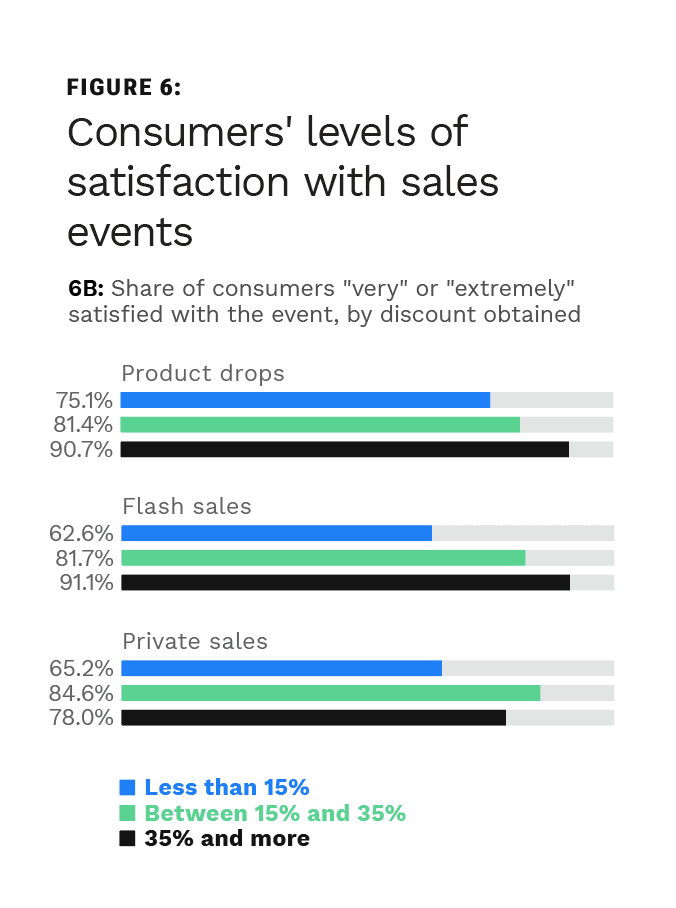Product Drops, Flash Sales Winning Consumer Hearts, Minds, Brand Affinity

Price satisfaction. Exclusivity. Affinity. These are some of the main factors making use of product drops, flash sales and related tactics part of an effective 2021 eCommerce strategy.
The new PYMNTS report, Product Drops: Retail’s New Conversion Play, a Scalefast collaboration, reveals the reasoning behind consumer love of assorted online sales. Drawing from a census-balanced survey of nearly 2,300 consumers, we examine what makes these sales tactics tick.
“Slower supply chain processes are currently resulting in reduced inventories, but customers nevertheless want access to high-quality — and sometimes even hard-to-find — items. The key will be for merchants to market these sales events to consumers over several channels so consumers from across the spectrum can easily learn about them,” per the new study.
“Merchants and brands that provide consumers with high-quality products at sale prices will find that they have boosted customers’ satisfaction and increased brand loyalty.”

Desires Of Sales Event Shoppers Revealed
Opening with the example of Supreme, the streetwear apparel brand that began as a humble NYC skateboard shop and today is a global phenom valued at $2 billion, “partly due to collaborations and product drops with brands like Levi’s, Louis Vuitton, Nike and Vans,” the new report gets at the heart of demographic and financial drivers behind the rising trend.
Youth is part of it, as expected, with vogue fashions and how to get them an obsession of younger demographic cohorts who love two specific things: insider status, and savings.
According to Product Drops: Retail’s New Conversion Play, “Around 60 percent of bridge millennial and younger consumers have participated in these events in the last month, whereas just 22 percent of baby boomers and seniors have done the same. These sales events are also popular among the affluent: 53 percent of consumers with high incomes have participated in these events in the last month while just one-third of low-income consumers” did so.
And those familiar with sales events are most likely to go for them again. PYMNTS researchers found that of past event shoppers, “47 percent want to participate in product drops, 56 percent want to participate in flash sales and 45 percent want to participate in private sales.”
Pricing is a particularly potent draw, with the report noting that “71 percent of consumers who express interest in sales events value having access to products at a good price, and with flash sales it’s even more important. “Buying products at a good price is particularly important to consumers when they are making purchases through flash sales,” the report notes, adding that “74 percent of consumers cite it as a reason to participate in the sale.” Hard-to-find items and certain quality products also draw consumers. “Forty-five percent of consumers who are interested in product drops value access to products that are difficult to obtain, and 48 percent are interested in product drops because of the access to high-quality products.”

Affinity, Satisfaction Get The Windfall
Not only are these tactics creating awareness and generating revenue at a tough time, but they also have an impressive impact on factors like brand affinity and elusive consumer satisfaction.
“Consumer satisfaction tends to increase with the level of discount obtained as 91 percent of consumers who received discounts of 35 percent or more at flash sales and product drops were ‘very’ or ‘extremely’ satisfied,” according to Product Drops: Retail’s New Conversion Play.
Observing that the affinity trend “is especially accurate for product drops as 78 percent of consumers who increased brand affinity were ‘very’ or ‘extremely’ satisfied with these events,” we can expect the deluge of eCommerce sales tactics to continue and deepen as consumers get used to them.
Now as before, we also find youth leading the movement. “Age plays a factor in how consumers learn about these events. We found that 29 percent of bridge millennials learn about such events through social media, as do 28 percent of both millennials and Gen Z consumers,” the report states.
“Baby boomers and seniors are more likely to learn about these events through email, with 48 percent citing it as a means of doing so. Emails are also a popular way of keeping track of such events as 33 percent of Gen X consumers reported learning about events in their inboxes.”
